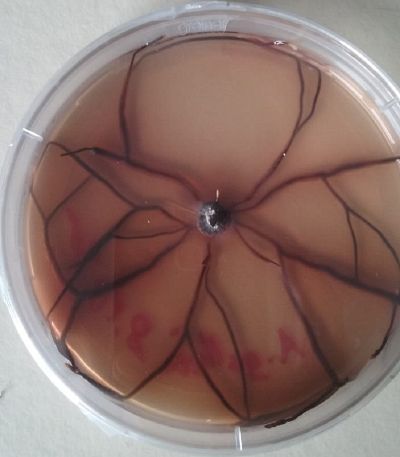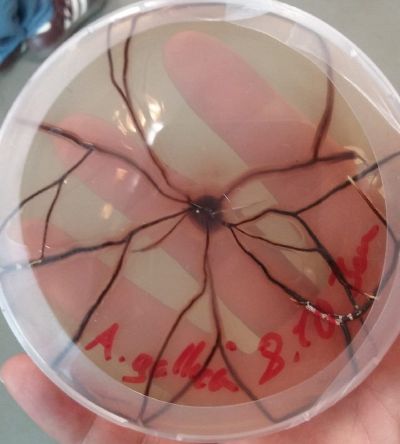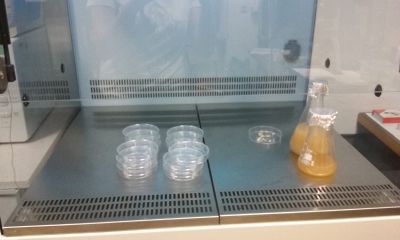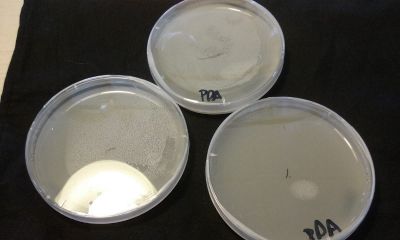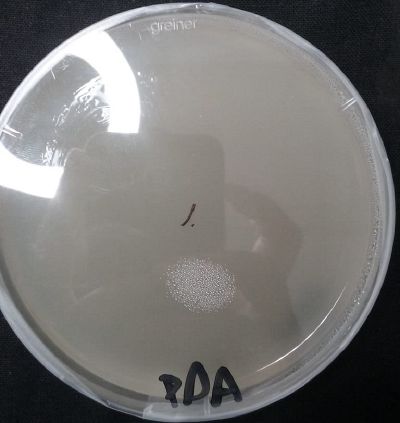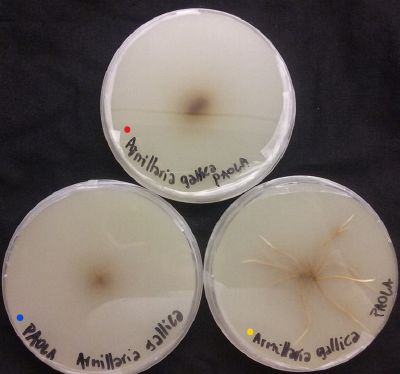Paola Stephania/Specimen adoption 2: ''Armillaria Gallica''.: Difference between revisions
No edit summary |
No edit summary |
||
| Line 42: | Line 42: | ||
*Day 10: | *Day 10: | ||
[[File:wd13.jpg|400px]] | |||
- The sample left in the sunny | - The sample left in a sunny place (blue spot) haven't grown much, an initial growth like roots can be seen at the bottom of the sample. The second sample (red spot) have grown a little more than the sample left in the sunny spot, but at the bottom, any "root" can be seen. The sample left in total darkness have growth a lot, a shape in form of roots is almost all over the Petri box. It seems that the dark places are ideal for this specimen. | ||
*Day 15: | |||
Revision as of 20:54, 25 November 2018
Armillaria Gallica
Link to Wikipedia: https://es.wikipedia.org/wiki/Armillaria_gallica
- Day 1:
- Introduction to the laboratory working space, the location of instruments and some working techniques.
- Workshop around activities, expectations, questions around what the group wants to learn, personal experience, previous work or field of work, and knowledge that can be offered to the team.
- Presentation from Jan Glöckner, an expert in fungi work. After the presentation, a medium for fungi was prepared, a medium for one of his original samples.
Original sample of Jan Glöckner (Armillaria Gallica.)
Potatoe Dextrose Agar (PDA)
- Diced and boiled potatoes - 150g - Dextrose - 7g - In 500ml of water, boil 150g of potatoes. Strain out the solids, bring the solution back to 500ml with water, then add remaining ingredients. Five grams of potatoes flakes can be used as a substitute.
For the preparation were used: - 380 ml of diced and boiled Potatoes - 7 g of Dextrose - 7.6 g of Agar
- Day 2:
- Whit the Potatoe Dextrose Agar (PDA) made on the first day we cultivate/make a clone of Armillaria Gallica.
The first three samples are left in different environments in order to test which kind of conditions they prefer in order to grow. The first sample is left in a sunny place with a temperature of around 18°C, the second sample is left in a partially illuminated environment with a temperature of around 16°C-17°C and the third sample is left in total darkness with a temperature of around 19°C.
The fourth sample is left in the laboratory in total darkness (possibility of light if the doors of the closet are open).
- Day 10:
- The sample left in a sunny place (blue spot) haven't grown much, an initial growth like roots can be seen at the bottom of the sample. The second sample (red spot) have grown a little more than the sample left in the sunny spot, but at the bottom, any "root" can be seen. The sample left in total darkness have growth a lot, a shape in form of roots is almost all over the Petri box. It seems that the dark places are ideal for this specimen.
- Day 15:
